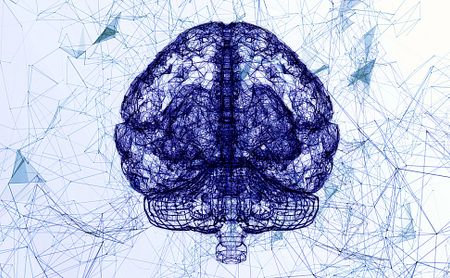Map Charts Information Flow Among Neurons in Movement Center of Brain

A neural map of the brain region central to Parkinson’s disease opens the possibility of new ways to treat this disorder and others that stem from damage to the nerve cells found there.
The map, detailed in a recent study, might enable researchers to understand how specific nerve damage leads to disease symptoms by tracking the flow of information between different brain structures.
The study, “Specific populations of basal ganglia output neurons target distinct brain stem areas while collateralizing throughout the diencephalon,” was published in the journal Neuron.
A brain region called the basal ganglia coordinates movement, and is central to the development and progression of Parkinson’s. Researchers, however, have never had a map charting the neural connections along which information travels to and from this structure.
A team of scientists at the University of California at San Diego and Columbia University’s Zuckerman Institute has mapped the connections passing through the substancia nigra pars reticulata (SNr), the largest output nucleus, or point through which information travels, from the basal ganglia to other brain structures.
The SNr is part of the substancia nigra, where dopamine-producing nerve cells, or neurons, are lost over the course of Parkinson’s.
Working in mice, the investigators assembled their neural blueprint using a combination of techniques adapted from genetics, virus tracing (following the movement of viruses between cells to determine their connectivity), microscopic brain imaging, and image processing.
Previous studies had suggested that the basal ganglia operated in a “closed loop” format, wherein its outgoing neurons connected to the structures that send information back. The new work shows, instead, that SNr neurons send information to distant parts of the motor system, while also branching off to simultaneously send information back to the brain structures responsible for higher-order control and learning.
This simultaneous flow of information helps higher-level brain structures, those responsible for complex information, continually communicate with the lower-level structures that regulate basic body processes.
“The fact that specific basal ganglia output neurons project to specific downstream brain nuclei but also broadcast this information to higher motor centers has implications for how the brain chooses which movements to do in a particular context, and also for how it learns about which actions to do in the future,” Rui Costa, PhD, one of the study’s authors, said in a university release.
Lauren McElvain, PhD, the study’s lead author, added: “With the detailed circuit map in hand, we can now plan studies to identify the specific information conveyed by each pathway, how this information impacts downstream neurons to control movement and how dysfunction in each output pathway leads to the diverse symptoms of basal ganglia diseases.”
Other basal ganglia disorders include Tourette’s syndrome, attention deficit hyperactivity disorder, and obsessive-compulsive disorder.
This work was supported by the European Research Council, the Howard Hughes Medical Institute, the National Institutes of Health, and the Tourette Association of America.






